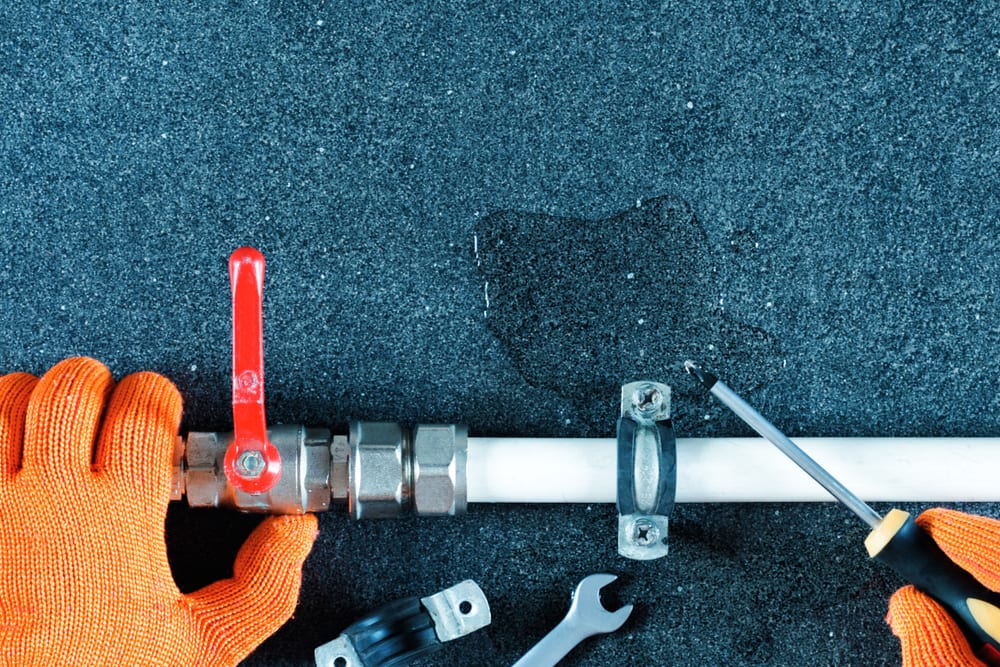Uncovering Concealed Water Line Leaks: Six Smart Detection Methods
Uncovering Concealed Water Line Leaks: Six Smart Detection Methods
Blog Article
They are making a number of good points on Locating water leaks overall in this content down the page.

Early discovery of leaking water lines can mitigate a possible calamity. In addition to saving you money, it will lessen the worry and aggravation. The minute you find a leak, calling your plumber for repair work is the most effective option. Nonetheless, some little water leaks might not be visible. If you can not find it with your naked eyes, right here are some hacks that help.
1. Examine the Water Meter
Every home has a water meter. Checking it is a proven way that aids you discover leaks. For starters, switch off all the water resources. Make certain no one will flush, use the faucet, shower, run the washing machine or dish washer. From there, most likely to the meter and watch if it will change. Because no person is utilizing it, there should be no movements. That indicates a fast-moving leak if it relocates. Also, if you detect no changes, wait an hour or more and also inspect back once more. This indicates you may have a slow leakage that can also be underground.
2. Inspect Water Consumption
Assess your water bills and also track your water usage. As the one paying it, you need to observe if there are any inconsistencies. If you spot sudden changes, regardless of your intake coinciding, it implies that you have leaks in your plumbing system. Remember, your water bill must fall under the exact same range each month. An unexpected spike in your bill suggests a fast-moving leak.
At the same time, a consistent boost each month, even with the very same routines, reveals you have a slow leak that's also gradually intensifying. Call a plumber to thoroughly check your home, especially if you feel a cozy area on your flooring with piping underneath.
3. Do a Food Coloring Test
30% comes from commodes when it comes to water intake. Test to see if they are running appropriately. Drop flecks of food shade in the storage tank as well as wait 10 mins. If the shade in some way infiltrates your dish throughout that time without flushing, there's a leakage in between the container and bowl.
4. Asses Outside Lines
Don't fail to remember to check your exterior water lines as well. Must water permeate out of the link, you have a loosened rubber gasket. One tiny leakage can waste loads of water as well as spike your water bill.
5. Examine and Assess the Scenario
Property owners should make it a habit to examine under the sink counters and even inside cupboards for any kind of bad odor or mold and mildew growth. These two warnings indicate a leak so timely attention is required. Doing regular inspections, also bi-annually, can save you from a major trouble.
Examine for stainings as well as weakening as a lot of appliances as well as pipes have a life span. If you believe leaking water lines in your plumbing system, do not wait for it to escalate.
Early discovery of dripping water lines can mitigate a potential catastrophe. Some tiny water leaks might not be noticeable. Checking it is a proven way that aids you discover leakages. One little leak can lose heaps of water and also surge your water costs.
If you presume dripping water lines in your plumbing system, don't wait for it to rise.
WARNING SIGNS OF WATER LEAKAGE BEHIND THE WALL
PERSISTENT MUSTY ODORS
As water slowly drips from a leaky pipe inside the wall, flooring and sheetrock stay damp and develop an odor similar to wet cardboard. It generates a musty smell that can help you find hidden leaks.
MOLD IN UNUSUAL AREAS
Mold usually grows in wet areas like kitchens, baths and laundry rooms. If you spot the stuff on walls or baseboards in other rooms of the house, it’s a good indicator of undetected water leaks.
STAINS THAT GROW
When mold thrives around a leaky pipe, it sometimes takes hold on the inside surface of the affected wall. A growing stain on otherwise clean sheetrock is often your sign of a hidden plumbing problem.
PEELING OR BUBBLING WALLPAPER / PAINT
This clue is easy to miss in rooms that don’t get much use. When you see wallpaper separating along seams or paint bubbling or flaking off the wall, blame sheetrock that stays wet because of an undetected leak.
BUCKLED CEILINGS AND STAINED FLOORS
If ceilings or floors in bathrooms, kitchens or laundry areas develop structural problems, don’t rule out constant damp inside the walls. Wet sheetrock can affect adjacent framing, flooring and ceilings.
https://www.servicemasterbyzaba.com/blog/how-to-detect-water-leakage-in-walls/

We had been shown that article on Hacks to detect leaks from a good friend on a different domain. Do you know about anybody else who is excited by Top leak detection hacks? Feel free to promote it. I thank you for reading our article about Detecting hidden plumbing leaks.
High-quality, fast plumbing repairs. Report this page